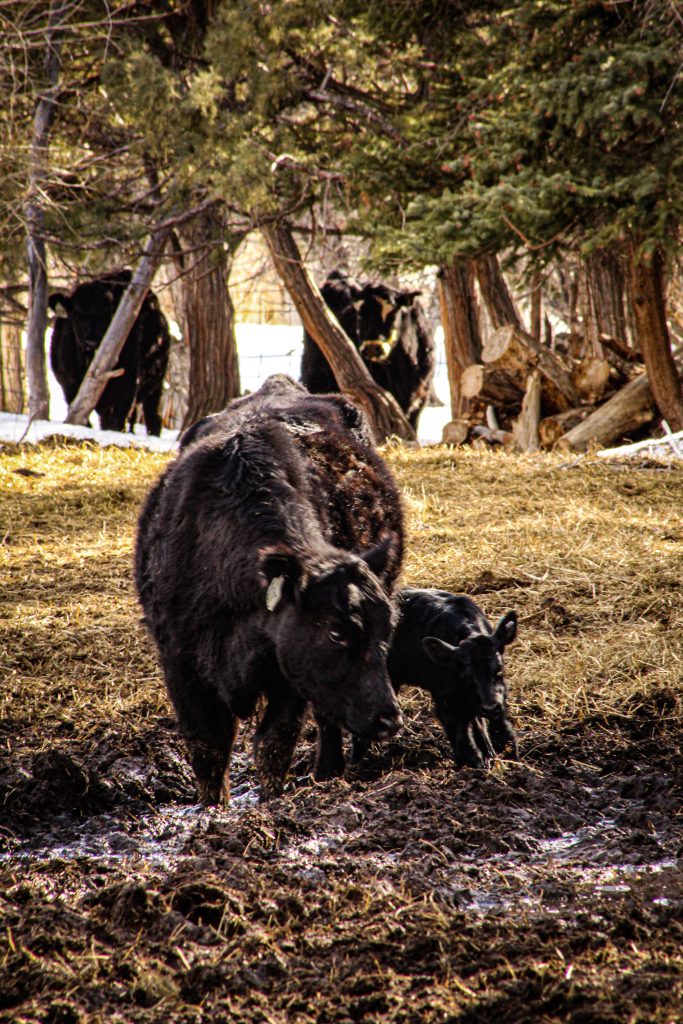Spring Melt: Muddy conditions may decrease animal performance

After an early April storm slammed the U.S., piling up several feet of snow and toppling a handful of snowfall records, on top of a long winter with some of the toughest conditions many have ever seen, the sun finally started shining and temperatures began to rise.
Although the warmth is welcome, producers and livestock alike will have to face another obstacle as the heavy snow load starts to melt – mud.
Industry experts agree mud accumulation can present a long list of problems on an operation, and they encourage producers to do their best to mitigate these issues.
Decreased performance
First and foremost, mud can have a severe impact on cattle performance.
In a Drovers article, dated April 7, 2016, University of Wisconsin Extension Specialist Bill Halfman explains mud makes it more difficult for animals to move around, requiring them to expend more energy, and therefore, increasing their energy requirements – up to 10 percent.
Additionally, energy requirements increase for cattle when they are cold, wet and covered in mud since they need more energy to stay warm. But, since mobility is difficult, animals will make fewer trips to the feedbunk or move around less to find forage, resulting in lower feed intake.
“With mild conditions of just four to eight inches of mud, cattle dry matter intake is reduced by 15 percent versus what it would be under the same conditions without mud,” Halfman states. “When severe mud conditions are present – one foot of more – dry matter intake plummets by 30 percent.”
He shares from a feedlot perspective, when cattle are standing in four to eight inches of mud, gain can decrease by nearly 15 percent, and if they are standing in belly-deep mud, gain can decrease up to 25 percent.
“Consequently, the negative impact of mud on feed efficiency can result in up to a 56 percent increase in cost of gain as more days on feed are necessary to reach finish,” Halfman says.
He adds, “It’s no wonder it becomes challenging to maintain good body condition on cows and desirable weight gains on calves when mud is all around.”
Calving concerns
Unfortunately for many producers, wet and muddy conditions often overlap calving season, which can present a number of different problems for cow/calf pairs.
Michigan State University Extension Specialist Jerad Jaborek published an article on April 1, noting mud stuck on udders has the potential to spread disease, compromise the health of nursing calves and cause calf loss.
Halfman further notes mud can decrease the insulative properties of a haircoat, which is of increased concern for newborn calves born in muddy conditions, especially when it’s cold.
“Calves can become chilled by mud, trapped in it or sickened by the pathogens thriving in it,” he says. “This is why it is important to closely monitor calving, routinely check cattle and move cow/calf pairs to fresh pasture soon after calving.”
Jaborek also points out muddy conditions will further increase the already high energy requirements of cows and heifers during gestation and lactation.
He cites a 2021 study conducted by Ohio State University, in which cows and heifers were kept individually in un-bedded pens with 9.3 inches of mud or in pens bedded with woodchips and sawdust during the last trimester of gestation.
Researchers found cows in un-bedded pens were 82 pounds lighter and heifers were 96 pounds lighter than their counterparts in bedded pens.
“The loss in body weight corresponds to an increased energy demand of 3.9 and 4.3 megacalories per day, respectively,” Jaborek explains. “While the energy demands of a pregnant cow increase 6.5 megacalories per day from the initiation of gestation to calving, mud may increase these energy demands even further.”
Management
and mitigation
“Managing mud can be a challenge,” states Jaborek, who suggests producers consider adopting management practices on their operations to allow cattle to escape muddy conditions.
Halfman notes, in addition to management strategies, pen maintenance and design; the use of bedding; proper drainage; preventing runoff water from entering pens; providing adequate space for each animal, especially in high-traffic areas such as around feedbunks and water troughs and moving cattle around to different areas are all ways producers can mitigate issues caused by mud accumulation this spring.
Hannah Bugas is the managing editor of the Wyoming Livestock Roundup. Send comments on this article to roundup@wylr.net.





